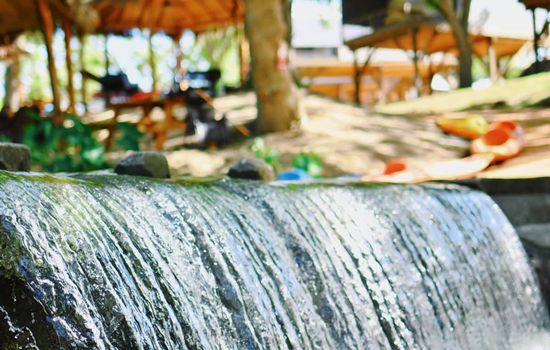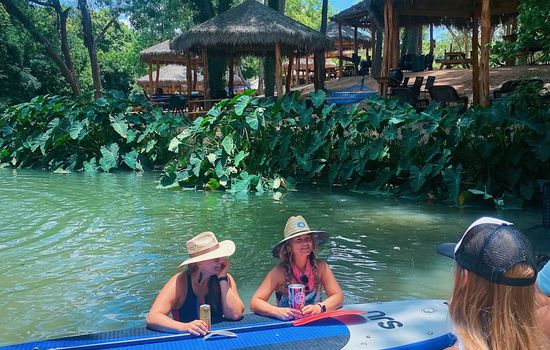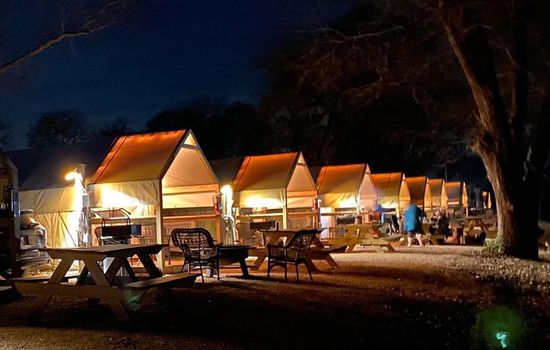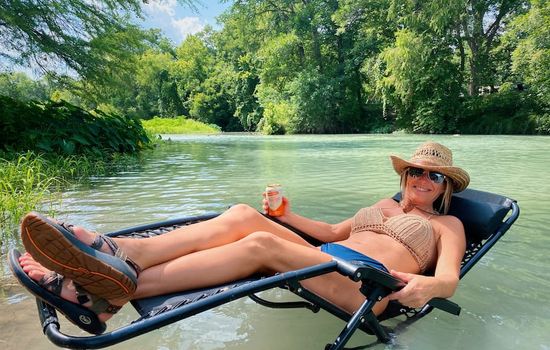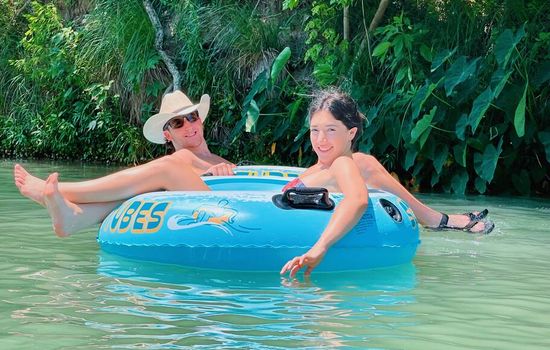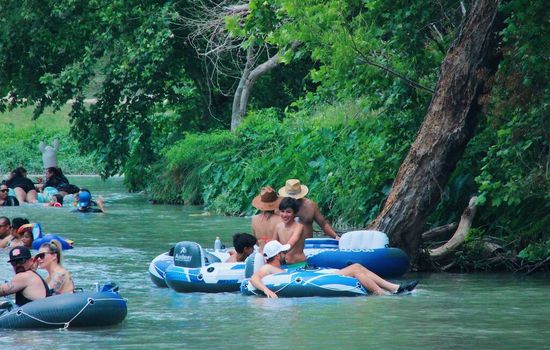To visit the Military Working Dog Teams National Monument, obtain a pass at the East Luke Visitor Center, which is open during Joint Base San Antonio – Lackland’s normal operational hours. For specific hours, call 210-671-6174.
There is no entrance fee to visit the Military Working Dog Teams National Monument. It is free to all visitors.
From San Antonio, take Highway 90 West to Joint Base San Antonio-Lackland. Turn at the 37th Training Wing Parade field to find this poignant tribute to canine heroes. Immersive granite plazas and bronze sculptures await, honoring a legacy of loyalty and service.
Parking is available on the lot south of the 37th Training Wing HQ Building, with free parking for cars and motorcycles. No specific provisions for RVs, and overnight parking is not permitted.
Accessibility & permits
Emergency
- Cell service availability:Partial
Information not accurate?
Help us improve by making a suggestion.
In the heart of Texas, on the sprawling grounds of Joint Base San Antonio-Lackland, stands a poignant tribute to the unsung heroes of the U.S. military: the Military Working Dog Teams National Monument. This solemn yet vibrant tribute is set against the backdrop of a base that has been the epicenter of military working dog training since 1958.
The monument, unveiled on October 28, 2013, is a masterful blend of granite and bronze, featuring a 3,000 square feet plaza, pedestals, a history wall, benches, and a water fountain. At its core are large bronze statues of dogs and their handlers, a powerful reminder of the indomitable bond between humans and animals in the line of duty.
Located on the southeast corner of the Air Force Basic Military Training parade grounds, this monument honors the contributions of military working dogs and their handlers from all branches of the armed forces since World War II. The surrounding landscape is dotted with the Holland Veterinary Military Working Dog Hospital, a testament to the comprehensive care given to these canine heroes.
Visitors can immerse themselves in the rich history and significance of this site, reflecting on the sacrifices and achievements of these extraordinary teams. The area is also home to various training facilities, adding a dynamic layer to the experience. While the monument itself is a place of contemplation, it is also a celebration of loyalty, courage, and the unbreakable bonds forged in service.
For those seeking to delve deeper, nearby San Antonio offers a wealth of cultural and historical attractions, from its vibrant artisan towns to its rich military heritage. This monument, though not a traditional travel destination, is a must-visit for anyone appreciating the intersection of history, honor, and the unique bond between humans and animals.
- Area (mi²)
- 0.1
- Established year
- 2008
Top 3 Facts about Military Working Dog Teams National Monument
The monument features a 9-foot bronze sculpture of a modern day dog handler, highlighting the enduring bond between handlers and their dogs, with four bronze dog sculptures representing common breeds like Doberman Pinscher, German Shepherd, Labrador Retriever, and Belgian Malinois.
This monument, while a tribute to heroic canine service, is set amidst a landscape that is notably devoid of distinct flora and fauna. The focus here is on the bronze sculptures and granite structures, with no notable wildlife or unique plant species. The area is more about honoring the bond between dogs and their handlers than about natural surroundings. However, the functional water fountain, part of the Not Forgotten Fountain, does invite visiting dogs to quench their thirst, highlighting the human-animal connection in a simple yet meaningful way.
In the arid landscape of southern Texas, the monument stands against a backdrop of rolling hills and vast, sun-kissed plains. The nearby Medina River, with its clear, warm waters, flows gently through the terrain, providing a stark contrast to the monument’s granite and bronze sculptures. The region’s hot temperatures, often reaching over 100°F in summer, are a testament to the rugged environment that these military working dogs and their handlers have endured. The surrounding hills, though not towering, offer a subtle yet defining character to the landscape, highlighting the resilience and adaptability of both the land and its honored inhabitants.
Family programs
- Self-guided Tours
- Workshops & Hands-on Activities
- Living History & Cultural Demos
- Scavenger Hunts
- Arts & Crafts
Travel Tips
Plan Ahead
Plan a spring visit to avoid heat, allowing a few hours for the memorial. Arrive early to clear security at the base entrance, bring ID, and park near the site. Wear comfortable shoes for the short, paved walk. Limited dining options nearby, so eat before or after your visit.[-]
Pack Appropriately
Pack versatile, quick-drying clothing and sturdy footwear. Bring a day pack with water, sunscreen, and a first-aid kit. For longer stays, include a travel towel, sleeping bag, and rainwear. Check the weather forecast to adjust your gear accordingly.
Respect Wildlife
Respect the urban surroundings by disposing of trash properly and keeping the area clean. Avoid disturbing local flora and fauna, and keep pets on leashes. Stay hydrated in the Texas sun and respect the memorial’s serene atmosphere.
Stay Informed
Check weather forecasts and trail conditions before venturing out. Exercise caution near ledges, water, and hot springs. Stay informed about fire restrictions and park rules. For emergencies, call park authorities at 911 or the park’s emergency number. Always travel with a companion and carry a first aid kit.
Seasons
Visit in spring when temperatures range from 60s to 80s Fahrenheit, with mild weather. Attend the annual Airman Heritage Foundation events in April, honoring the bravery of military working dogs and their handlers. A poignant and inspiring experience amidst blooming wildflowers.
Visit in summer for warm temperatures (90s°F) and humidity. Despite the heat, October’s 10th anniversary commemoration is a must-see, honoring heroic canine veterans with ceremonies and tributes.
Visit in fall, when crisp temperatures (60s-70s°F) and mild weather create a perfect backdrop. Attend the 10-year anniversary commemoration in October, featuring a K9 Competition and ceremonies, honoring the bond between handlers and dogs. A poignant and inspiring experience.
Visit in winter (Dec-Feb) for mild temperatures (40s-60s°F) and fewer crowds, allowing a serene tribute to the heroic dog handlers and their canine companions. Crisp weather enhances the monument’s solemn beauty.
Information not accurate?
Help us improve by making a suggestion.
Where to stay
Frequently Asked Questions
Ready to dive into what Military Working Dog Teams National Monument has to offer? Let’s tackle some of the burning questions you might have as you plan your visit!
-
The closest city to the monument is San Antonio, Texas. The monument is located at Joint Base San Antonio-Lackland, which is in the vicinity of San Antonio.
-
Yes, you can bring your dog, as the monument is pet-friendly. However, it is advisable to keep your dog on a leash. The monument is located at Joint Base San Antonio — Lackland, which has historical significance for the U.S. military working dog program.
-
Yes, parking is free and available near the monument.
-
The main attraction is a set of five bronze sculptures on a large granite pedestal, featuring a 9-foot modern day Military Working Dog Handler and four common breeds of military dogs: Doberman Pinscher, German Shepherd, Labrador Retriever, and Belgian Malinois. The monument was unveiled on October 28, 2013, and is located at the Air Force Basic Military Training parade grounds on JBSA-Lackland in San Antonio, Texas. It also includes the “Not Forgotten Fountain,” a bronze sculpture and functional fountain honoring the bond between dog handlers and their K-9 partners.


